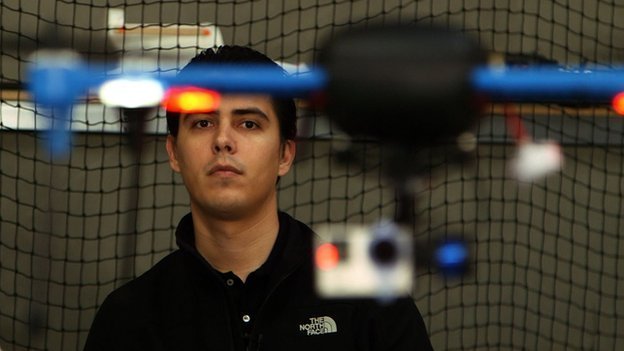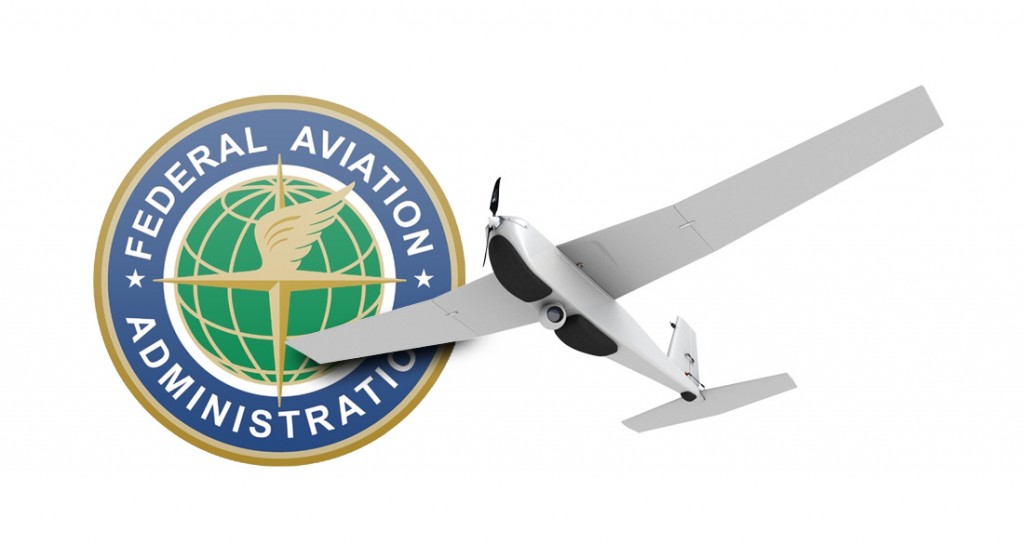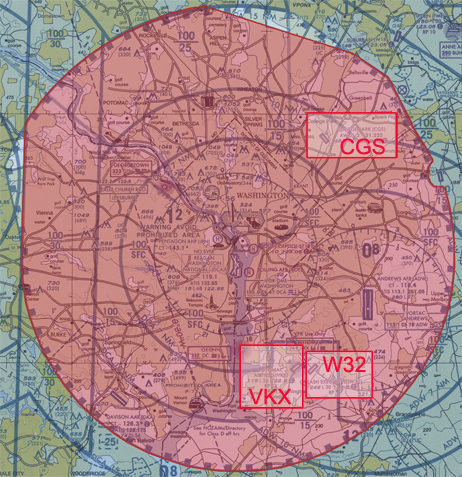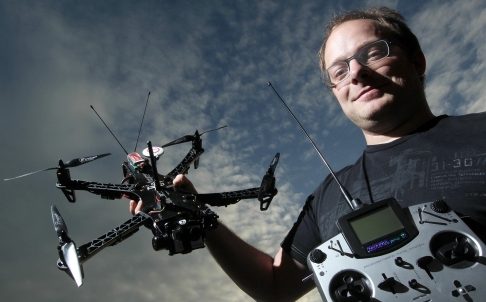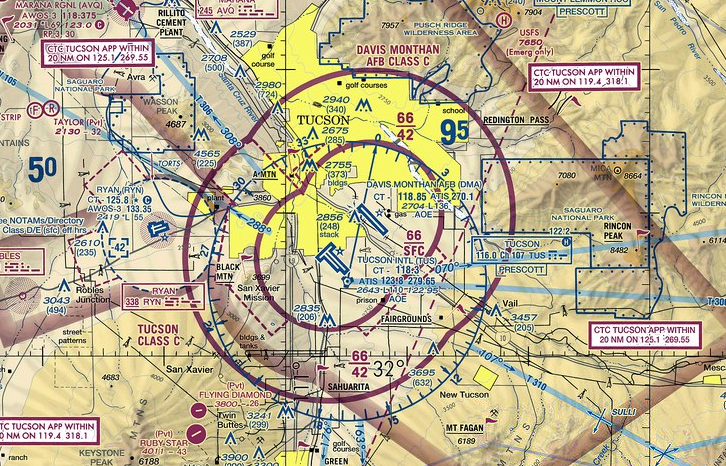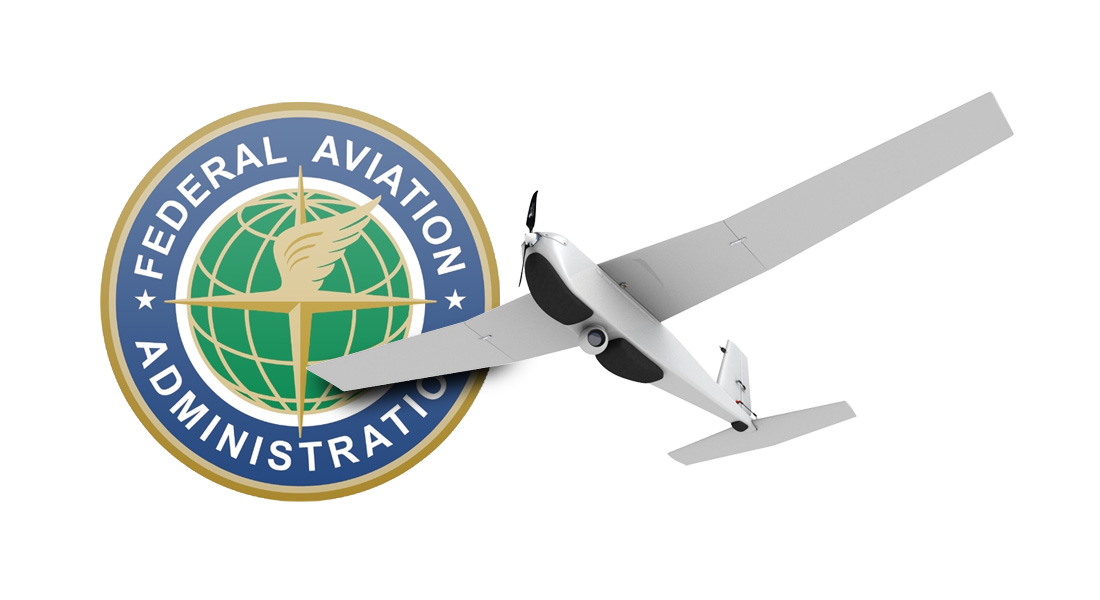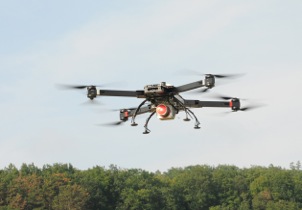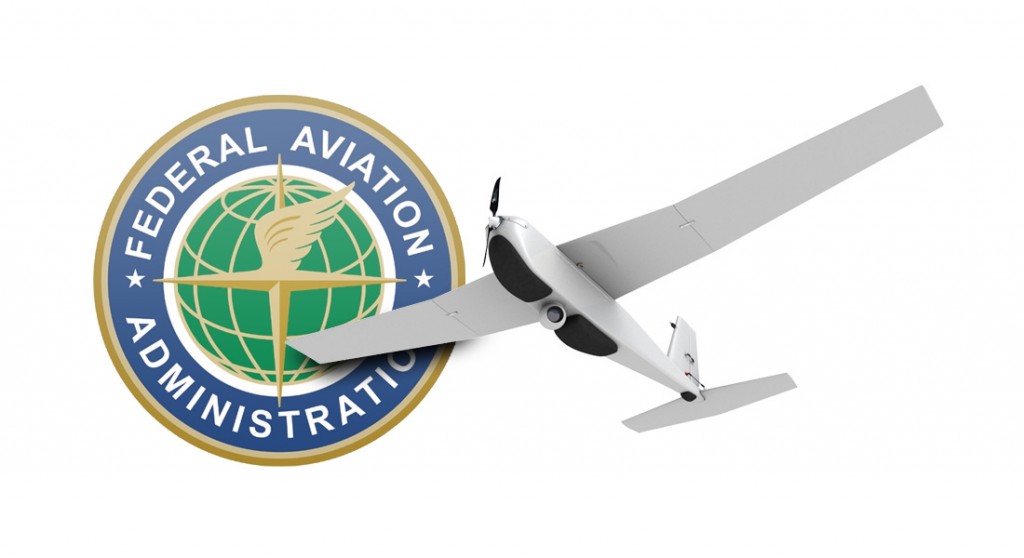
Expect the FAA to finally start the three month small rule NPRM process today Monday the 22nd of December. But remember we have been here before many times. Should it happen I can finally remove the Miss-O-Matic from sUAS News. I believe the Small UAV Coalition of which Chris Anderson was a founder is having a telephone call with the FAA today so some of the clues are there. At sUAS News we expect the 333 requirements to form a key part of things moving forward so I am adding them below for reference.
Should it not happen today this post will serve as a reminder of another missed opportunity.
1. The UA must weigh less than 55 pounds (25 Kg), including energy source(s) and equipment. Operations authorized by this grant of exemption are limited to the following aircraft described in the proprietary FOPMs: HexaCrafter HC-1100 and Aeronavics SkyJib 8 v.2 Heavy Lifter. Proposed operations of any other aircraft will require a new petition or a petition to amend this grant.
2. The UA may not be flown at a speed exceeding a ground speed of 50 knots.
3. Flights must be operated at an altitude of no more than 400 feet above ground level (AGL), as indicated by the procedures specified in the operator’s manual. All altitudes reported to ATC must be in feet AGL.
4. The UA must be operated within visual line of sight (VLOS) of the PIC at all times. This requires the PIC to be able to use human vision unaided by any device other than corrective lenses, as specified on the PIC’s FAA-issued medical certificate.
5. All operations must utilize a visual observer (VO). The VO may be used to satisfy the VLOS requirement, as long as the PIC always maintains VLOS capability. The VO and PIC must be able to communicate verbally at all times.
6. The operator’s manual is considered acceptable to the FAA, provided the additional requirements identified in these conditions and limitations are added or amended. The operator’s manual and this grant of exemption must be maintained and made available to the Administrator upon request. If a discrepancy exists between the conditions and limitations in this exemption and the procedures outlined in the operator’s manual, the conditions and limitations herein take precedence and must be followed. Otherwise, the operator must follow the procedures as outlined in its operator’s manual.
The operator may update or revise its operator’s manual. It is the operator’s responsibility to track such revisions and present updated and revised documents to the Administrator upon request. The operator must also present updated and revised documents if it petitions for extension or amendment. If the operator determines that any update or revision would affect the basis for which the FAA granted this exemption, then the operator must petition for amendment to their exemption. The FAA’s UAS Integration Office (AFS-80) may be contacted if questions arise regarding updates or revisions to the operator’s manual.
7. Prior to each flight the PIC must inspect the UAS to ensure it is in a condition for safe flight. If the inspection reveals a condition that affects the safe operation of the UAS, the aircraft is prohibited from operating until the necessary maintenance has been performed and the UAS is found to be in a condition for safe flight. The Ground Control Station, if utilized, must be included in the preflight inspection. All maintenance and alterations must be properly documented in the aircraft records.
8. Any UAS that has undergone maintenance or alterations that affect the UAS operation or flight characteristics, e.g. replacement of a flight critical component, must undergo a functional test flight in accordance with the operator’s manual. The PIC who conducts the functional test flight must make an entry in the UAS aircraft records of the flight. The requirements and procedures for a functional test flight and aircraft record entry must be added to the operator’s manual.
9. The operator must follow the manufacturer’s UAS aircraft/component, maintenance, overhaul, replacement, inspection, and life limit requirements. When unavailable, aircraft maintenance/ component/overhaul, replacement, and inspection/maintenance requirements must be established and identified in the operator’s manual. At a minimum, the following must be included in the operator’s manual:
a. Actuators / Servos
b. Transmission (single rotor)
c. Powerplant (motors)
d. Propellers
e. Electronic speed controller
f. Batteries
g. Mechanical dynamic components (single rotor)
h. Remote command and control
i. Ground control station (if used)
j. Any other components as determined by the operator
10. The Pilot In Command (PIC) must possess at least a private pilot certificate and at least a current third-class medical certificate. The PIC must also meet the flight review requirements specified in 14 CFR § 61.56 in an aircraft in which the PIC is rated on his/her pilot certificate.
11. Prior to operations conducted for the purpose of motion picture filming (or similar operations), the PIC must have accumulated and logged, in a manner consistent with 14 CFR § 61.51 (b), a minimum of 200 flight cycles and 25 hours of total time as a UAS rotorcraft pilot and at least ten hours logged as a UAS pilot with a similar UAS type (single blade or multirotor). Prior documented flight experience that was obtained in compliance with applicable regulations may satisfy this requirement. Training, proficiency, and experience-building flights can also be conducted under this grant of exemption to accomplish the required flight cycles and flight time. During training, proficiency, and experience-building flights, all persons not essential for flight operations are considered non-participants, and the PIC must operate the UA with appropriate distance from non-participants in accordance with 14 CFR § 91.119.
12. Prior to operations conducted for the purpose of motion picture filming (or similar operations), the PIC must have accumulated and logged, in a manner consistent with 14 CFR § 61.51 (b), a minimum of five hours as UAS pilot operating the make and model of UAS to be utilized for operations under the exemption and three take-offs and three landings in the preceding 90 days. Training, proficiency, experience-building, and take-off and landing currency flights can be conducted under this grant of exemption to
6
accomplish the required flight time and 90 day currency. During training, proficiency, experience-building, and take-off and landing currency flights all persons not essential for flight operations are considered non-participants, and the PIC must operate the UA with appropriate distance from non-participants in accordance with 14 CFR § 91.119.
13. Prior to any flight operations authorized by this grant of exemption, the PIC and visual observer (VO) must have successfully completed a qualification process, as outlined in the operator’s manual. As this is a requirement stipulated by the operator, the test must be developed and implemented by a qualified person designated at the sole discretion of the operator. A record of completion of this qualification process must be documented and made available to the Administrator upon request.
14. Prior to operations conducted for the purpose of motion picture filming (or similar operations), a flight demonstration, administered by an operator-approved and -qualified pilot must be successfully completed and documented. This documentation must be available for review upon request by the Administrator. Because the knowledge and airmanship test qualifications have been developed by the operator, and there are no established practical test standards that support a jurisdictional FAA FSDO evaluation and approval of company designated examiners, the petitioner will conduct these tests in accordance with the operator’s manual.
15. The UA may not be operated directly over any person, except authorized and consenting production personnel, below an altitude that is hazardous to persons or property on the surface in the event of a UAS failure or emergency.
16. Regarding the distance from participating persons, the operator’s manual has safety mitigations for authorized and consenting production personnel. At all times, those persons must be essential to the closed-set film operations. Because these procedures are specific to participating persons, no further FSDO or Aviation Safety Inspector (ASI) approval is necessary for reductions to the distances specified in the petitioner’s manuals. This is consistent with the manned aircraft procedures described in FAA Order 8900.1, V3, C8, S1 Issue a Certificate of Waiver for Motion Picture and Television Filming.
17. Regarding distance from non-participating persons, the operator must ensure that no persons are allowed within 500 feet of the area except those consenting to be involved and necessary for the filming production. This provision may be reduced to no less than 200 feet if it would not adversely affect safety and the Administrator has approved it. For example, an equivalent level of safety may be determined by an aviation safety inspector’s evaluation of the filming production area to note terrain features, obstructions, buildings, safety barriers, etc. Such barriers may protect non-participating persons (observers, the public, news media, etc.) from debris in the event of an accident. This is also consistent with the same FAA Order 8900.1, V3, C8, S1.
18. If the UAS loses communications or loses its GPS signal, the UA must return to a pre-determined location within the security perimeter and land or be recovered in accordance with the operator’s manual.
19. The UAS must abort the flight in the event of unpredicted obstacles or emergencies in accordance with the operator’s manual.
20. Each UAS operation must be completed within 30 minutes flight time or with 25% battery power remaining, whichever occurs first.
In addition to the conditions and limitations proposed by the operator, the FAA has determined that any operations conducted under this grant of exemption must be done pursuant to the following conditions and limitations:
21. The operator must obtain an Air Traffic Organization (ATO) issued Certificate of Waiver or Authorization (COA) prior to conducting any operations under this grant of exemption. This COA will also require the operator to request a Notice to Airman (NOTAM) not more than 72 hours in advance, but not less than 48 hours prior to the operation.
22. All aircraft operated in accordance with this exemption must be identified by serial number, registered in accordance with 14 CFR part 47, and have identification (N-Number) markings in accordance with 14 CFR part 45, Subpart C. Markings must be as large as practicable.
23. The operator must develop procedures to document and maintain a record of the UAS maintenance, preventative maintenance, alterations, status of replacement/overhaul component parts, and the total time in service of the UAS. These procedures must be added to the operator’s manual.
24. Each UAS operated under this exemption must comply with all manufacturer Safety Bulletins.
25. The operator must develop UAS technician qualification criteria. These criteria must be added to the operator’s manual.
26. The preflight inspection section in the operator’s manual must be amended to include the following requirement: The preflight inspection must account for all discrepancies, i.e. inoperable components, items, or equipment, not covered in the relevant preflight inspection sections of the operator’s manual.
27. Before conducting operations, the radio frequency spectrum used for operation and control of the UA must comply with the Federal Communications Commission (FCC) or other appropriate government oversight agency requirements.
8
28. At least three days before scheduled filming, the operator of the UAS affected by this exemption must submit a written Plan of Activities to the local FSDO with jurisdiction over the area of proposed filming. The 3-day notification may be waived with the concurrence of the FSDO. The plan of activities must include at least the following:
a. Dates and times for all flights
b. Name and phone number of the operator for the UAS filming production conducted under this grant of exemption
c. Name and phone number of the person responsible for the on-scene operation of the UAS
d. Make, model, and serial or N-number of UAS to be used
e. Name and certificate number of UAS PICs involved in the filming production event
f. A statement that the operator has obtained permission from property owners and/or local officials to conduct the filming production event; the list of those who gave permission must be made available to the inspector upon request.
g. Signature of exemption-holder or representative
h. A description of the flight activity, including maps or diagrams of any area, city, town, county, and/or state over which filming will be conducted and the altitudes essential to accomplish the operation
29. The documents required under 14 CFR § 91.9 and § 91.203 must be available to the PIC at the ground control station of the UAS any time the aircraft is operating. These documents must be made available to the Administrator or any law enforcement official upon request.
30. The UA must remain clear and yield the right of way to all other manned operations and activities at all times (including, but not limited to, ultralight vehicles, parachute activities, parasailing activities, hang gliders, etc.).
31. UAS operations may not be conducted during night, as defined in 14 CFR § 1.1. All operations must be conducted under visual meteorological conditions (VMC). Flights under special visual flight rules (SVFR) are not authorized.
32. The UAS cannot be operated by the PIC from any moving device or vehicle.
33. The UA may not be operated less than 500 feet below or less than 2,000 feet horizontally from a cloud or when visibility is less than 3 statute miles from the PIC
34. The UA may not operate in Class B, C, or D airspace without written approval from the FAA. The UA may not operate within 5 nautical miles of the geographic center of a non-towered airport as denoted on a current FAA-published aeronautical chart unless a letter of agreement with that airport’s management is obtained, and the operation is conducted in accordance with a NOTAM as required by the operator’s COA. The letter of agreement with the airport management must be made available to the Administrator upon request.
35. Any 1) incident, 2) accident, or 3) flight operation that transgresses the lateral or vertical boundaries of the operational area as defined by the applicable COA must be reported to the Federal Aviation Administration’s (FAA) UAS Integration Office (AFS-80) within 24 hours. Accidents must be reported to the National Transportation Safety Board (NTSB) per instructions contained on the NTSB Web site: www.ntsb.gov. Further flight operations may not be conducted until the incident, accident, or transgression is reviewed by AFS-80 and authorization to resume operations is provided.



